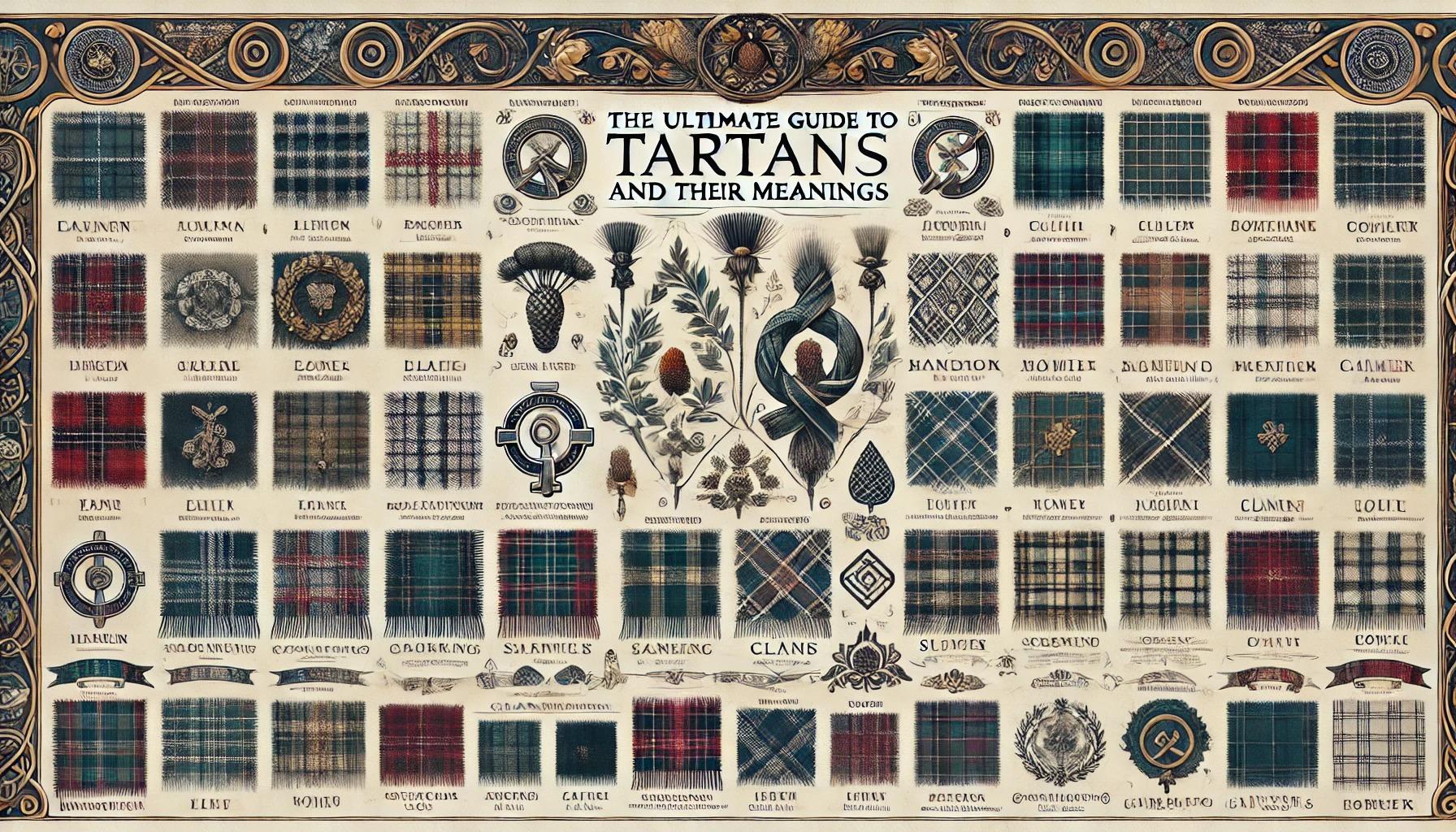The Ultimate Guide to Tartan Patterns and Their Meanings

Tartan patterns are more than stylish checks—they’re woven expressions of history, family, geography, and identity. This guide explores the origins, types, and symbolic meanings behind tartans, helping you understand their deep cultural significance and how to choose the one that best represents you.
1. What Is a Tartan?
A tartan is a fabric pattern consisting of crisscrossed horizontal and vertical bands in multiple colors. While often associated with kilts, tartans appear in scarves, sashes, trews, and even interior design.
But what makes tartans truly special is that each pattern, or “sett,” can represent:
-
A clan or family
-
A region or district
-
A military regiment
-
A special event or cause
2. Origins: Where Tartans Began
Tartans date back to at least the 3rd century AD, with the earliest example—the Falkirk Tartan—discovered in central Scotland. Originally, they were regional, created from locally available plant-based dyes.
Over time, as weaving evolved, so did the patterns. By the 17th and 18th centuries, tartans became associated with:
-
Highland clans
-
Territorial boundaries
-
Visual identities for both families and allegiances
3. Tartan as Identity: Clan Connections
By the 19th century, especially during the Victorian “Highland Revival,” tartans were formally linked to clans. Today, many Scottish families can trace their lineage to a clan tartan, and registries help protect and preserve these patterns.
Wearing your family’s tartan is more than a fashion choice—it’s a way to:
-
Celebrate ancestry
-
Honor heritage
-
Express cultural pride
4. Types of Tartans
There are several categories of tartans, each with its own use and symbolism:
✅ Clan Tartans
The most widely recognized, clan tartans represent Scottish families and lineages.
✅ District Tartans
Linked to geographical regions or towns rather than family names (e.g., Aberdeenshire, Isle of Skye tartans).
✅ Hunting Tartans
Usually darker, more muted colors used historically for camouflage while hunting.
✅ Dress Tartans
Brighter, often incorporating white, designed for formal occasions (popular in Highland dancing and weddings).
✅ Mourning Tartans
Traditionally black and white or grayscale tartans worn during periods of grief or remembrance.
✅ Fashion Tartans
Modern, non-affiliated designs used primarily in the fashion industry.
✅ Corporate & Commemorative Tartans
Created for businesses, events, or causes (e.g., Scottish Parliament Tartan, Pride Tartans).
5. Decoding Tartan Colors and Their Symbolism
While not all tartan color meanings are officially standardized, certain symbolic associations have developed over time:
-
Red: Courage, strength, sacrifice
-
Green: Nature, fertility, harmony
-
Blue: Loyalty, sky, freedom
-
Black: Power, resilience, remembrance
-
White: Peace, purity, hope
-
Yellow/Gold: Prosperity, light, generosity
-
Brown: Earth, stability, humility
Tartans often combine these colors in meaningful ways, telling layered stories about people, places, and values.
6. How to Find Your Tartan
Not sure which tartan to wear? Start here:
🔍 By Clan or Surname
Use online databases like the Scottish Register of Tartans or clan websites to search for your family name. Many names have multiple associated tartans.
🌍 By Region
If your surname isn’t Scottish, you can still wear a district tartan related to where you live or visit.
🎨 By Meaning or Design
Choose a tartan based on colors or personal symbolism. For example, many people choose a Pride Tartan or a commemorative tartan that represents a cause they care about.
🧵 Create Your Own
Yes—you can design a custom tartan. Whether you're representing a mixed heritage, family event, business, or personal story, new tartans can be registered officially.
7. Famous Tartans and What They Represent
👑 Royal Stewart Tartan
The personal tartan of Queen Elizabeth II and a symbol of British royalty. Bold red with blue, green, and yellow.
⚔️ Black Watch Tartan
A dark, dignified blue and green tartan worn by military regiments. Known for its versatility and historical prestige.
🌲 Hunting MacRae Tartan
A muted green-based tartan used for outdoor settings and clan representation.
🏳️🌈 LGBTQ+ Pride Tartan
A modern design incorporating rainbow colors, symbolizing inclusivity and expression.
8. Tartan in Modern Life
Tartans are more accessible and relevant than ever:
-
Worn at weddings, funerals, and cultural festivals
-
Featured in runway collections by top designers
-
Adapted into hybrid kilts, scarves, coats, and accessories
-
Used to express identity beyond borders, from Scottish-Americans to cultural allies
No matter how you wear it, tartan tells a story—and invites others to ask about yours.
9. Tartan Etiquette: Dos and Don’ts
✅ Do wear tartans with pride—even if you’re not Scottish by blood, you can wear one respectfully.
✅ Do research the history behind a tartan you plan to wear.
✅ Do ask permission before wearing a restricted tartan (some are reserved for royalty or clans only).
❌ Don’t assume every tartan is interchangeable—each one has its own identity.
❌ Don’t wear clan tartans to mock or mimic tradition—they are symbolic and meaningful.
10. Why Tartans Still Matter Today
In a world of fast fashion and fleeting trends, tartans endure. Why?
-
They hold memory—of families, struggles, victories.
-
They connect generations through visible heritage.
-
They bridge culture and identity, offering expression for both tradition and individuality.
-
They’re beautiful, practical, and uniquely personal.
In every thread, a story. In every pattern, a people. In every kilt, a legacy still being written.
- Art
- Causes
- Crafts
- Dance
- Drinks
- Film
- Fitness
- Food
- Games
- Gardening
- Health
- Home
- Literature
- Music
- Networking
- Other
- Party
- Religion
- Shopping
- Sports
- Theater
- Wellness


